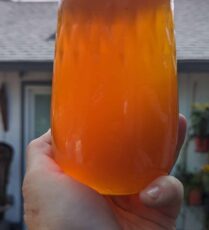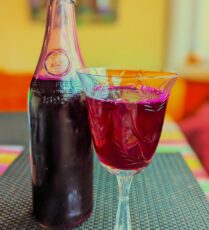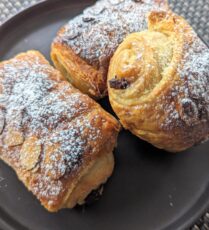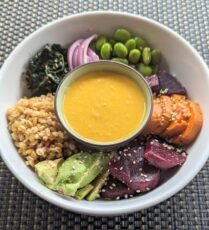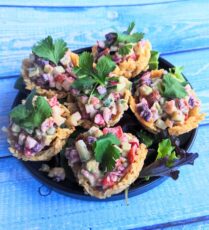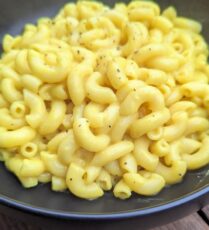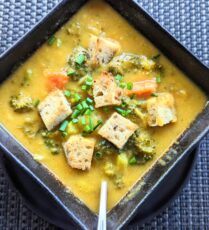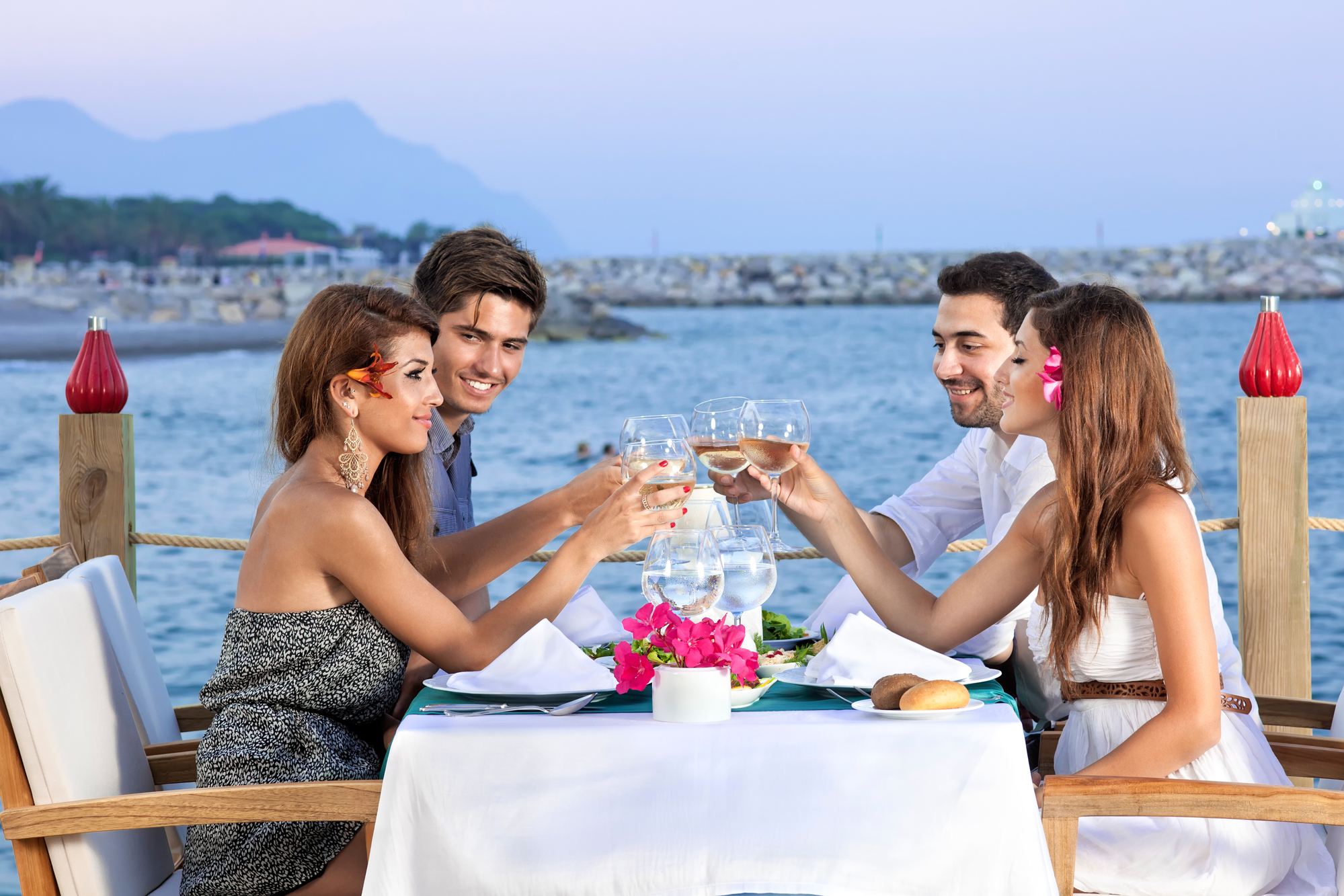1. Plan before you leave
– A little research at home goes a long way. As an absolute minimum, always check the site Happycow.com to identify vegan friendly restaurants in every city you will be visiting and locate health food stores to get your supplies. THIS IS A MUST!
– Also find out where and when local farmer’s markets are so that you can buy local fruit and vegetable for breakfast or snacking. This is a must for Europe where eating out can be expensive and depending what your travel budget is.
– There are so many vegan travelers that now blog about their experience that you can read specifics information on just about any region in the world when it comes to safely experience local food. Research, research, research! It is also a great way to meet cool people once you get there!
– If you are travelling with a smart phone to a big city, download the Foursquare app and search for “vegan” mentions near where you are and find great tips left by others who have come before you.
– If you are traveling with a small group of people and plan on staying in one city, you will be a lot better off by renting an Airbnb instead of getting a hotel since it will come with a full kitchen and dining area. You will be totally in control of your food experience.
2. What to expect on the plane
No matter what airline you are traveling on, you should always order a vegan meal (vegetarian no lacto-ovo) and bring some snacks on the plane just in case they forget about it. This has happened to me once every 5-6 international trips! So you have been warned!
Another thing you can count on is that it isn’t going to be a memorable meal! You will most likely get a small green salad with oil and vinegar dressing, some steamed vegetables with rice but no real sauce to speak of, a fruit salad and usually a ice cold roll of bread. Voilà, bon appétit! For some reason, airplane food without meat or fish resembles more a hospital diet tray where flavor and seasonings have been omitted on-purpose! This being said, in coach class, Asian airlines do a much better job in serving tastier food (many serve some form of marinated pan-fried tofu as protein).
3. What to prepare ahead of time
Here are some of my favorite snacks I always bring with me when I travel. They are easy to pack, do not need refrigeration, and last a long time.
- Seaweed Love All Natural Roasted Seaweed Variety Pack, Original and Olive Oil, 0.18 Ounce (Pack of 24). Buy large packages and empty the content in small Ziploc bags. Can be used as is, with salads, rice etc.)
- Chickpeas, white and red beans make a great protein-rich snack. See my recipe for Homemade roasted bean mix for a fantastic healthy salty fast food treat!
- Medjool dates stuffed with raw almonds as a sweet snack. Can’t get tired of this combo.
- A mix of raw nuts, bananas, and goji berries.
- A handful of prunes works wonders to counter the effects sitting for hours and cabin pressure have on the digestive system, and ensure proper elimination while in the air! All I will say about it is that it is amazing and helps with jetlag because proper elimination can be an issue when going over timezones and getting used to it.
- A small Ziploc bag with your favorite mix of spices.

4. What to bring with you
Here is a shortlist of items I bring pretty much every time I travel:
– A metal water bottle to carry both hot and cold liquid. Or PBA-free plastic if you don’t need to carry hot liquid.
– A good water filter
– A collapsible bowl to bring back leftover foods. One of my favorite kind is the Aladdin 2 Collapsible Mini Bowl Set 4oz, Eggplantbecause it comes with a lid that screws on top so you never have to worry about leaks. It is also microwave and dishwasher safe and BPA-free. What’s not to like?
– A good probiotic supplement that doesn’t require refrigeration. I use Saccharomyces Boulardii + MOS, Value Size, 180 Count because it is hypoallergenic, nondairy, and contains over 5 billion organisms per capsule!
– Small glass bottles for spices, sauces, etc.
– Small Ziploc bags to pack salads, snacks in your purse or backpack.
5. What to avoid on the ground
We have all heard the saying “When in Rome …” and while it may be true in many cases, there are a few instances where one should probably abstain from following the crowd. In my experience, there are:
– If you travel below the Equator or to Asia, India, or Africa, it is better to stay away from local street food stalls (unless of course, they are vegan!) because tourists do not have the resistance to bacteria and parasites that locals are used and immuned to.
– Try to only eat fruit that can be peeled (banana, papaya, kiwi etc.)
– If you are in hot countries, never drink tap water and if you have to, use a portable water filter (straw or filter in the bottle). There are many models, I like the Katadyn vario water filter because it is small, I can connect it to my water bottle and it does the job.
6. Know how to communicate your needs
Even if you don’t feel that you need to explain why you are vegan, I have noticed that depending on which country you are visiting, people will respond differently to your reasons for being vegans.
- If you are in France (a fairly vegan hostile country) the simple mention that you have a serious allergy to certain foods will increase the chances that the waiter will tell you the truth about what they are serving you.
- If you are in Asia, you can say that you follow the principles of non-violence and everyone will be impressed!
- In the US and South America, ethical reasons are understood. This being said, if you find yourself dining at someone’s home, a fancy restaurant, or a food cart, be respectful of others, always keep a positive attitude that you will work something out and you will. If it doesn’t look like it will, no problem, try somewhere else. This is where keeping something to snack on will go a long way because changing a plan when you are starving won’t help to find a solution. By focusing on the food instead of while asking for a few substitutes and not.
7. Know specific substitutes to ask for
Depending on where you are traveling or the type of restaurants you are dining at, there are a few things to look out for that you may not be aware of:
- In Chinese restaurants: watch out for dishes served in oyster sauce.
- In Thai and Vietnamese restaurants, make sure that there is no fish sauce in the dishes (usually found in most curry dishes). Ask for soy sauce or plum sauce as a substitute for fish counterpart (Nuoc Mam).
- In French restaurants, always ask if the soup was made with vegetable broth, if the pasta has eggs, ask to cook in olive oil.
- In Japanese restaurants, order vegetable sushi (avocado, cucumber, asparagus), order miso soup without bonito flakes.
- Stay away from curry dishes in Indian restaurants (since they are usually cooked with yogurt), ask if they could prepare flatbread without ghee (clarified butter).
8. Learn a few words in the local language
Being able to share a few words in the local language while ordering food or getting to know the locals is a great way to connect with people and show interest and respect for their culture. As a minimum, you should learn how to say: no meat, no fish, no eggs, no dairy, no honey, no gelatin in the local language. Write it down phonetically, then try to memorize these short sentences so that you can point at an item and ask whether or not they are safe. Don’t feel intimidated, a little goes a long way. The idea is that you are opened to learning new words, new flavors, new customs…
The easiest way to learn is to get a Vegan card in the language you need. It is the size of a credit card and says it all! In the worst-case scenario, you don’t even have to learn how to speak, you can just show it to the waiter and let them tell you what is safe on the menu.

9. Planning for cruises
Cruises are very popular these days and since you are going to be stuck on a boat for a while, you should make sure that they can truly accommodate vegans and by that, I don’t mean serving you green salads and pasta with tomato sauce every day! Research well before booking so that you know what to expect. Then inform the cruise line of your special needs way before you depart.
In general, you can find an array of options with the buffet for lunch. For dinners on board, try to stay at the same table if you have a good waiter that understands your needs.
Here are the best cruise lines in terms of experience for vegans:
1. Royal Caribbean has identified gluten-free, low-calorie, lactose-free or vegetarian, and have introduced gluten-free foods on their menus.
2. Holistic Holiday’s Seven Day Vegan Sea Cruise is a great option!
3. Vegan Cruise Planners go to the Mexican Riviera
4. Carnival Cruises can accommodate vegan and gluten-free passengers. They even have special diet hostesses that will take care of your every need!
5. Holland America has a vegetarian menu that can easily be veganized.
If you are still not sure, look for recent cruise reviews and comments online.
10. Look for vegetarian/vegan tours online and support them!
If you don’t want to hassle with finding vegan-friendly food, deal with a foreign language or plan for every detail while traveling, search for packages that offer all-inclusive vegan-friendly tours. As the vegan community grows, more and more vegan travel tours are popping up. So patronize them so that more join the movement! Research online, contact the owners or managers, read comments from previous travelers to make sure what they offer is what you are looking for.
Happy travels! Bon Voyage!
Don’t hesitate to share if you have more tips on vegan traveling!



